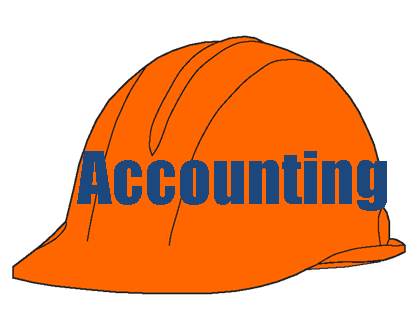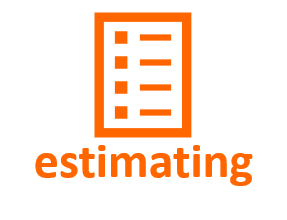ACCOUNTING and FINANCE--
Construction Accounting -
Building and Using Your Financials
Construction accounting is more than just irrelevant numbers.
Success in your Construction Business requires that you have a method to measure historical financial performance and to plan for your financial future. Accounting provides such a method.
The information generated from your accounting process is the language spoken by your banker, vendors and investors.
Finally, you will use the historical numbers to make your future numbers more accurate. If you are using reliable numbers to generate new proposals, it is easier to avoid under-bidding the job and losing money or over-bidding the job and losing work. Neither outcome is sustainable.
Below are some links to useful topics describing ways to actually use your accounting information to build a better construction business.
Job Cost Accounting
The most rigorous component of construction accounting is job cost accounting.
Job Cost Accounting assumes, and in fact requires, that all revenues and all hard cost expenditures be allocated to a specific job. At the end of the job, you simply deduct the total costs from the total revenues for the job to find out if you made any money on that job. Then all your individual jobs are aggregated to the main accounts to determine if the company made money, and how much.
It is relatively easy to determine which job the framing labor or the rough plumbing or the roofing labor should be charged to because the work is performed on the job site. If you are using the Builder Resources Subcontractor Management System, the process of allocating subcontractor work directly to the job is very easy. (Go to an Explanation of the Subcontractor Management System here ----->)
It gets a little more tricky when you spend money on a pallet of collated nails, bulk PVC plumbing lines, or pick up a case of caulk. Our procedure is to allocate the entire cost of miscellaneous products to the job on which the bulk of the product is used, and assume it will all come out in the wash. That is going to upset some accountants, but remember, the object is to develop meaningful numbers, not necessarily precise numbers. Of course, if you feel that this tactic is skewing your results, tighten up your allocation procedures. Just make certain that the effort that goes into counting each tube of caulk is an efficient use of your managerial skills.
It is even more difficult to try to allocate individual overhead costs (office space, secretarial, your management salary, or office supplies) to specific jobs. If you determine that you are going to try to allocate actual overhead costs, the website has several suggestions for how to go about this analysis. You can access the discussion regarding overhead cost allocation here ---->
Financial Analysis
The reason construction accounting is important is that it offers you the opportunity to "read" the story of your business. The discipline of corralling all the numbers relating to your business provides historical information to inform you about what happened in your business. Accounting provides a foundation based on numerical facts about how your business performed.
The limitation to accounting is that it is a story of what happened in the past, a reporting tool. To make the information useful as a management tool, the numbers must be extrapolated into the future and incorporated into your financial analysis and financial planning. For example:
- Realizing that you ran the business at a loss in the last quarter will lead to making changes such as curtailing expenses, reviewing estimating practices, and more closely monitoring purchasing in the future.
- Discovering that subcontractor costs as a percentage of sales are increasing will encourage you to look more closely at how to tighten up your subcontractor management procedures.
Once you have useful accounting numbers, there are two simple financial analysis exercises you can conduct.
- The first looks inward to compare the current financial results of your company with its historical financial results. Using historical analysis, you compare the accounting numbers for the most recent period (monthly, quarterly, annual) with the last few matching periods to discover and then manage the trends;
- the second is benchmarking your company results against the universe of other construction companies similar to yours. By benchmarking your company results against the results of other construction companies of your size, you will be able to determine how your company is performing versus the other construction companies. This is useful in determining how well you are managing your company. Comparative numbers are available through industry associations, the best of which is the National Association of Home Builders (NAHB).
In future postings, we will be discussing many of the more advance comparative analytic models. Included will be Breakeven Analysis, Indifference Analysis and Present Value Discount Analysis.
We will also be investigating the usefulness of several financial decision model categories including liquidity ratios, profitability ratios and performance ratios.
How Critical Are Accounting and Financial Analysis?
As a business owner, you must become familiar with the accounting numbers of your enterprise. Such knowledge is as important to your business survival as knowing how to read a tape measure is to constructing a house.
If you ignore your accounting and financial analysis, you do so at the risk of losing control of your company.





















